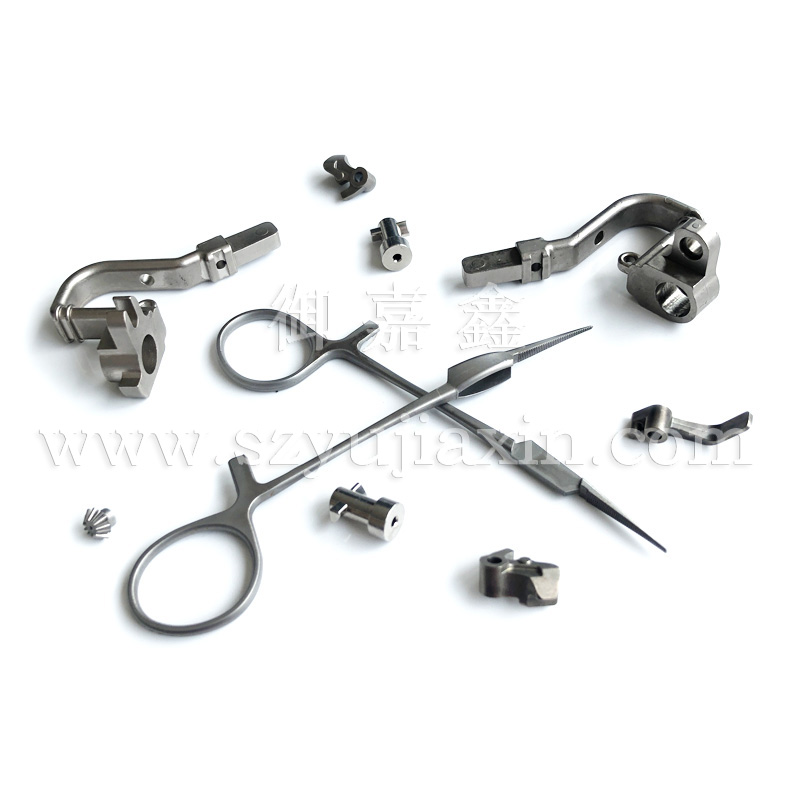The machining efficiency is low, and it is difficult to process parts with complex structures, but they are still used extensively in mobile phone processing. Why? MIM has high processing efficiency and can process complex structural parts, but it is currently only used in small parts such as cell phone trays and buttons. Why? Stamping, machining, and MIM are used in many mobile phone metal parts. What are their advantages and disadvantages? Let's analyze them further below.
1. Stamping
Stamping is a forming processing method that relies on presses and molds to apply external forces to plates, etc., to obtain the desired shape of stamping parts. According to statistics, 60-70% of the world's steel materials are plates, and most of the plates are processed by stamping. Therefore, stamping has inherent advantages!
The stamping process has high production efficiency, short production cycle, and large processing size range, so more mobile phone back covers (lower end) use the stamping process. Why can't stamping be used for small parts such as cell phone trays? Because the precision of the stamping is not up to the requirements of the phone card tray (a closer look can see that there is a height difference in the part of the card tray to facilitate the placement of the SIM card. This type of height difference is difficult to achieve by stamping!)
2. Machining
Machining refers to the process of changing the shape or performance of a workpiece through a mechanical device. Machining includes: turning, milling, drilling, planing, grinding, shearing, etc.
Machining does not require mold design and production, has a great degree of freedom, and the processing accuracy is very high; but the machining output is low, and it is difficult to process structures with complex shapes.
Despite the low production efficiency, many high-priced, high-quality mobile phone metal middle frames/back covers still use CNC milling methods; on the one hand, people have not found a better method; on the other hand, the efficiency of die-casting, forging and other processes High, but surface treatment such as anodizing is not as good as machining. In addition, machining is also suitable for secondary processing such as product deburring, drilling, and surface treatment.
3. MIM
"MIM is another beautiful and bleak love story. The kind plastic particles are attracted to the rough metal powder. After high temperature experience, they finally fit together. Unfortunately, it doesn't last long. In order to become a perfect metal, the fire is practiced and turned into ashes."
Metal powder injection molding technology (MIM) is a new type of powder metallurgy near-net forming technology that combines modern plastic injection molding technology with traditional powder metallurgy technology. MIM products have high dimensional accuracy (±0.1%~±0.5%), good surface finish (roughness 1~5μm), and very large output. However, there are many MIM processes and there are certain technical barriers. Then why can't MIM be used for larger structural parts such as the middle frame/back cover of the mobile phone?
First of all, the degreasing and sintering of MIM will reduce the size of the product. The larger the product size, the greater the size deviation, and it is not easy to degreasing;
Secondly, most MIM parts are stainless steel. Although stainless steel can be anodized, it is still the best anode effect of aluminum (mainly because the oxide layer of aluminum is composed of aluminum oxide, forming an unconventional hexagonal test tube structure, which produces a mirror-like reflection effect, which looks like color. Bright).
Advantages and disadvantages of stamping, machining, MIM
In practical applications, a full process often contains multiple processing techniques, which requires us to know the advantages and disadvantages of each process.
Generally speaking, at present, machining represents the mid-to-high-end market of mobile phone mid-frame/back cover; stamping represents the mid-to-low-end market of mobile phone mid-frame/back cover; MIM represents the mainstream of small mobile phone components and new metal components. Direction.
